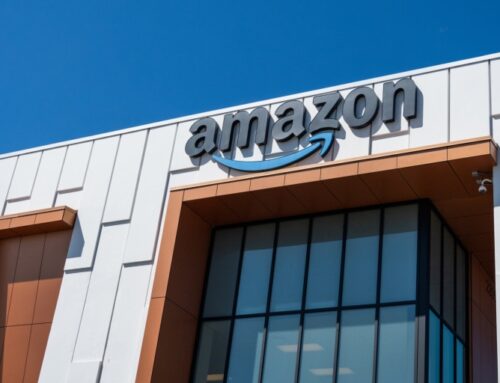How Trump’s First 100 Days Have Impacted Your Portfolio
April 29, 2025
(Image credit: Michael Nagle/Bloomberg via Getty Images)
Wednesday, April 30, marks the end of President Donald Trump’s 100th day in office – a time frame often used as a short-term measuring stick for a new administration.
Since Inauguration Day, there has been a flurry of executive orders and market jolts, and lots of folks (myself included!) are feeling whiplash just a few months in.
While Trump’s desire to fire Federal Reserve Chair Jerome Powell is certainly notable, the biggest headline coming out of his first hundred days in office is his aggressive tariff policies, which reset a global economic system that had been in place for the past 80 years or so and sparked a trade war with China.
Sign up for Kiplinger’s Free E-Newsletters
Profit and prosper with the best of expert advice on investing, taxes, retirement, personal finance and more – straight to your e-mail.
Profit and prosper with the best of expert advice – straight to your e-mail.
According to Treasury Secretary Scott Bessent, tariffs with China are unsustainable at current levels. This and the administration’s lack of a clear-cut trade plan have created market instability.
Since January 20, the Dow Jones Industrial Average is down 7.2%, the S&P 500 has shed 8.1% and the Nasdaq Composite is 12.1% lower – erasing trillions of dollars in market value from investors’ portfolios and retirement plans.
Based on the S&P 500 return, this is the worst stock market performance for a president’s first 100 days going back to the start of Richard Nixon’s second term in 1972, according to CFRA Research.
Meanwhile, in the bond market, the 10-year Treasury yield hit a six-month low of 3.86% on April 4 after China issued retaliatory tariffs on Trump’s reciprocal levies – down from 4.623% on January 20 – but has since jumped back up to the 4.20% level.
Here, we take a closer look at five other ways our portfolios have been impacted during Trump’s first 100 days in office – and what we can expect moving forward.
Recession fears ramp up
Not only has uncertainty over Trump’s tariff plans increased volatility in the equities and bond markets, but it’s ramped up expectations that the U.S. economy could enter a recession at some point in the near future.
“The most straightforward path to a recession baseline would be if more tariffs take effect than we currently expect,” says Jan Hatzius, head of Global Investment Research and chief economist at Goldman Sachs.
Hatzius currently places 45% odds of a recession occurring within the next year, but says it likely won’t be that severe if it does occur.
Still, asset valuations in both the stock and bond markets remain elevated, which increases the risk of a bigger sell-off if the economy slows, Hatzius notes.
Even with this uncertainty, Michael Taylor, investment strategy analyst at Wells Fargo Investment Institute (WFII), says that “staying fully invested in equity markets over a full market cycle can be more beneficial than selling into volatile markets.”
Taylor adds that regular rebalancing and diversification are helpful to ride out periods of instability.
Related: Recession-Proof Stocks: The Best Stocks to Buy for a Recession
The dollar nosedives
Rising recession risks and policy uncertainty during Trump’s first 100 days in office have sent the U.S. dollar tumbling to its lowest level in years.
“The U.S. dollar has typically appreciated as a perceived safe haven during uncertain and volatile times, but this has not held so far in 2025,” says Anthony Miano, investment strategy analyst at WFII.
However, Miano is not concerned that the recent decline in the dollar reflects “a serious change in its status as the global reserve currency” and notes it is still above historical averages.
He also does not believe it represents “a sustained move away from U.S.-dollar-priced assets” and anticipates a rebound by year’s end if the U.S. economic outlook improves.
Related: Kiplinger’s Economic Outlooks
Global markets outperform
U.S. markets have underperformed their global counterparts in Trump’s first 100 days – marking a leadership shift not seen in years.
“I have told investors for some time that international equity valuations have been compelling,” says Brian Burrell, portfolio manager and managing director at Thornburg Investment Management.
But what has suddenly changed, Burrell notes, is “the U.S.’ policy support, which has been helpful for domestic earnings. The momentum in the U.S. is easing while the setup elsewhere fares better.”
And Jason Pride, chief of Investment Strategy & Research, and Michael Reynolds, vice president of Investment Strategy at Glenmede, say that the recent dollar weakness should “benefit international equities as favorable currency exchange effects improve returns for U.S.-based investors.”
The two add that “foreign markets are poised for strong earnings growth this year, further enhancing their appeal in this environment.”
Related: How to Find the Best European Stocks to Buy
Tech leadership fades
After several years of outperformance, leadership among tech stocks has faded to start the year.
Indeed, the Nasdaq Composite entered a bear market earlier this month and the Technology Select Sector SPDR Fund (XLK) is down more than 10% for the year to date.
Part of the reason for the rotation out of tech is concern of slowing artificial intelligence (AI) spending, particularly following January’s DeepSeek release.
Trump’s tariffs and restrictions on chip exports to China have also created headwinds – so much so that AI bellwether Nvidia (NVDA) warned of a $5.5 billion writedown in its Q1 results.
But Brian Buetel, managing director at UBS Wealth Management, sees this weakness as temporary.
“While tech’s leadership in the market has clearly taken a pause so far this year … we still believe in the AI story and expect tech to resume its leadership once we have more clarity on the earnings impact of tariffs,” he says.
Buetel adds that investors will eventually “return to those tech names that have demonstrated the most significant growth over the last year.”
Related: If You’d Put $1,000 Into Nvidia Stock 20 Years Ago, Here’s What You’d Have Today
Bond market remains volatile
“The recent dysfunction in the bond market amid the ongoing global trade war has raised questions about Treasuries’ safe-haven role and stoked fears of a financial crisis,” write Lotfi Karoui, chief credit strategist, and William Marshall, head of U.S. Rates Strategy at Goldman Sachs.
The pair adds that this is the result of a combination of things, including expectations for slower growth and higher inflation, worries about the United States’ long-term debt sustainability and concern that U.S. Treasury bonds are seeing less interest from foreign buyers.
While Karoui and Marshall note that a silver lining has been the bond market’s ability to rein in Trump’s whims, they add that investors “need to look beyond bonds to protect their portfolios.”
They recommend “traditional safe-haven assets,” such as the Japanese yen and gold.
For what it’s worth, gold is up more than 20% since Inauguration Day to trade near record highs.
Related: The Best Gold ETFs With Low Costs
What happens next?
President Trump recently said that his administration has signed trade deals with 200 countries. He also noted that he would be willing to reduce some of the prohibitive tariffs on Chinese imports.
But Brent Schutte, chief investment officer at Northwestern Mutual Wealth Management Company, believes tariff negotiations could last longer than most folks are anticipating, considering “the president is pursuing a fundamental shift in the approach the U.S. takes globally.”
He says amid this elevated uncertainty, “investors are best served by following a time-tested approach” to their portfolios that includes diversification and a lengthy holding period.
Schutte also reminds investors that sticking to a long-term investing plan “should help you avoid letting emotions lead you to take actions that could hurt your financial situation in the long run.”
Related content
Profit and prosper with the best of Kiplinger’s advice on investing, taxes, retirement, personal finance and much more. Delivered daily. Enter your email in the box and click Sign Me Up.
Search
RECENT PRESS RELEASES
Ex-Miami Heat Coach Makes Leap In NBA Broadcast Booth
SWI Editorial Staff2025-04-29T11:48:41-07:00April 29, 2025|
It’s official — Prime Day is coming back in July. Here’s what we know so far
SWI Editorial Staff2025-04-29T11:48:37-07:00April 29, 2025|
Amazon takes first step toward satellite internet service with successful launch
SWI Editorial Staff2025-04-29T11:48:33-07:00April 29, 2025|
Sources: Hall of Famer Steve Nash is joining Amazon’s NBA coverage starting next season
SWI Editorial Staff2025-04-29T11:48:26-07:00April 29, 2025|
From Kylie Jenner to Beyoncé: Shop celebrity skincare faves on sale at Amazon
SWI Editorial Staff2025-04-29T11:48:21-07:00April 29, 2025|
UPS is cutting 20,00 jobs. It’s not what you think
SWI Editorial Staff2025-04-29T11:48:17-07:00April 29, 2025|
Related Post




